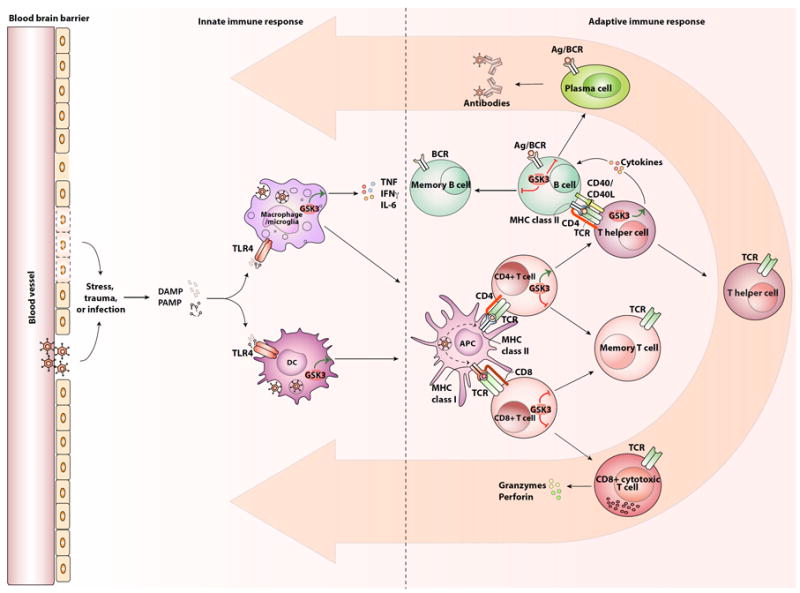Figure 1.

The innate and adaptive immune systems and the involvement of GSK3.
Upon stress, trauma, or infection by microbes, the innate immune system is activated. This occurs in part through the activation of TLR4, either directly by bacteria, by pathogen-associated molecular patterns (PAMPs), or by damage-associated molecular patterns (DAMPs, also called alarmins) that are generated from either the microbes or insults to the tissue. Activated TLR4 leads to the production of cytokines by macrophages and microglia, such as TNFα, IFNγ, and IL-6, and their expression is promoted by GSK3. Activated TLR4 induces immature dendritic cell (DC) development towards mature antigen presenting cells (APCs), which is facilitated by GSK3. Mature APCs present the antigen at the cell surface to activate the adaptive immune system, such as CD8+ T cells via presentation through major histocompatibility complex (MHC) class I or CD4+ T cells via MHC class II. Once activated, CD8+ T cells become cytotoxic CD8+ T cells and they produce granzymes and perforins to eliminate infected cells. GSK3 promotes the expression of PD-1 at the surface of CD8+ cells, which promotes exhaustion of the CD8+ cells and thereby reduces their cytotoxic function. Activated CD4+ T cells differentiate towards T helper cells. GSK3 promotes the differentiation of CD4+ T cells towards Th1 and Th17 subtypes. T helper cells also activate B cells to become plasma cells, which produce the immunoglobulin (antibody) specific to the encountered insult. CD8+, CD4+ and B cells all have the capacity to form a pool of memory cells, which are reduced by GSK3, which can be reactivated upon experiencing the same antigen. Once activated, the cells migrate to the site of the insult to resolve the inflammation, as indicated by the large orange arrows.
Put GSK3 inside macrophages and DCs
Delete NK cells
change “Stress or trauma” to “Stress, trauma, or infection” and lead an arrow from that to DAMP and PAMP
